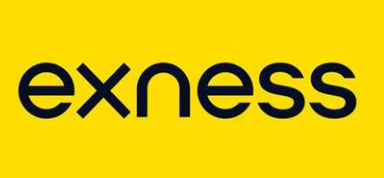Bitcoin has captured the world’s attention as a revolutionary digital asset. Since its inception in 2009, it has evolved from an obscure experiment into a global phenomenon, often described as “digital gold.” Its meteoric price rises and sharp corrections have made headlines, drawing in both seasoned investors and curious newcomers. Understanding effective strategies for Bitcoin holders is crucial in navigating this volatile market.
But with great potential comes great volatility. The cryptocurrency market is notorious for its price swings, and Bitcoin is no exception. This volatility can be intimidating, especially for those looking to build wealth over the long term. That’s why having a clear, disciplined investment strategy is essential for anyone who wants to hold Bitcoin for years—not just months.
In this blog, we’ll explore the top three long-term investment strategies for Bitcoin holders:
- HODLing
- Dollar-Cost Averaging (DCA)
- Diversification
Whether you’re a beginner or a seasoned investor, these strategies can help you navigate the ups and downs of the crypto market and position yourself for long-term success.
1. HODLing: The Classic Long-Term Approach
What is HODLing?
“HODL” is a term that originated from a misspelled word “hold” in a 2013 Bitcoin forum post. It quickly became a meme and now stands for “Hold On for Dear Life.” HODLing means buying Bitcoin and holding onto it for the long term, regardless of short-term price movements.
Why Does HODLing Work?
Bitcoin’s price history is a rollercoaster. There have been periods of rapid growth followed by steep declines. However, over the long term, Bitcoin’s value has trended upward, rewarding those who resisted the urge to sell during downturns.
For example, if you had bought Bitcoin in 2015 and simply held onto it, you would have seen exponential gains by 2021—even after several major crashes along the way. HODLing works on the belief that Bitcoin’s long-term potential outweighs its short-term volatility.
Key Principles of HODLing
- Patience and Conviction: HODLing requires a strong belief in Bitcoin’s long-term future. You need to be comfortable ignoring daily price swings and negative news cycles.
- Ignore Market Noise: The crypto market is full of hype, fear, and speculation. Successful HODLers tune out the noise and stick to their plan.
- Security is Paramount: If you’re holding Bitcoin for years, security is crucial. Use a hardware wallet or another secure storage method. Back up your recovery phrases and keep them in a safe place.
Pros and Cons of HODLing
Pros:
- Simple and stress-free: No need to time the market.
- Historically, long-term holders have seen significant returns.
- Avoids costly mistakes from panic selling.
Cons:
- Requires strong emotional discipline.
- You might miss out on opportunities to take profits during peaks.
- Long-term holding exposes you to regulatory and technological risks.
Real-World Example
Consider the story of early Bitcoin adopters who bought BTC for a few hundred dollars and held through multiple crashes. Many of them became millionaires simply by holding on and resisting the urge to sell during downturns.
Tips for Effective HODLing
- Set clear goals: Decide why you’re investing in Bitcoin and what your time horizon is.
- Don’t invest more than you can afford to lose.
- Periodically review your security setup.
2. Dollar-Cost Averaging (DCA): Smoothing Out Volatility
What is Dollar-Cost Averaging?
Dollar-Cost Averaging (DCA) is an investment strategy where you invest a fixed amount of money into Bitcoin at regular intervals—regardless of its price. For example, you might buy $100 worth of Bitcoin every week or every month.
Why DCA Works
The crypto market is unpredictable. Prices can swing wildly in a matter of hours. Trying to “time the market” (buying low and selling high) is extremely difficult, even for professionals.
DCA helps you avoid the stress of market timing. By investing consistently, you buy more Bitcoin when prices are low and less when prices are high. Over time, this can lower your average cost per Bitcoin and reduce the impact of volatility.
How to Implement DCA
- Choose Your Interval: Decide how often you want to buy (weekly, biweekly, monthly).
- Set a Fixed Amount: Determine how much you can comfortably invest each time.
- Automate Purchases: Many exchanges allow you to set up automatic recurring buys.
- Stay Consistent: Stick to your plan, even during market downturns or rallies.
Example Scenarios
Suppose you decide to invest $100 in Bitcoin every month for three years. During that period, Bitcoin’s price will fluctuate, but your regular purchases will average out the highs and lows. If you had started DCA in early 2018, you would have bought during both bear and bull markets, and by 2021, your investment would likely have grown significantly.
Benefits of DCA
- Reduces Emotional Investing: You’re less likely to make impulsive decisions based on fear or greed.
- Accessible for All Budgets: You don’t need a large lump sum to start investing.
- Mitigates Timing Risk: You don’t have to worry about buying at the “wrong” time.
Drawbacks of DCA
- You might miss out on large gains if Bitcoin’s price suddenly surges.
- Requires discipline to stick to the plan during market downturns.
Combining DCA with Other Strategies
Some investors combine DCA with HODLing. They accumulate Bitcoin over time and hold it for the long term, benefiting from both strategies. Others might use DCA to build a position and then diversify into other assets (more on that below).
3. Diversification: Balancing Your Crypto Portfolio
Why Diversify?
“Don’t put all your eggs in one basket.” This age-old investment wisdom applies to crypto as well. While Bitcoin is the most established and widely recognized cryptocurrency, the market is full of other opportunities—and risks.
Diversification means spreading your investments across different assets to reduce risk. If one asset underperforms, others may offset the losses.
Methods of Diversification
- Within Crypto:
- Altcoins: Consider allocating a portion of your portfolio to other cryptocurrencies like Ethereum, Solana, or promising new projects. Each has its own risk and reward profile.
- Stablecoins: These are cryptocurrencies pegged to stable assets like the US dollar. They can provide a safe haven during market volatility.
- DeFi Projects: Decentralized Finance (DeFi) platforms offer opportunities for earning interest, lending, or yield farming.
- Beyond Crypto:
- Some investors diversify by holding traditional assets like stocks, bonds, or real estate alongside their crypto holdings.
How Diversification Can Help
- Reduces Risk: If Bitcoin’s price drops, gains in other assets may cushion the blow.
- Increases Opportunity: Exposure to emerging projects can lead to higher returns.
- Buffers Against Volatility: A balanced portfolio is less likely to experience extreme swings.
Tips for Effective Diversification
- Do Your Research: Not all altcoins or DeFi projects are created equal. Study the fundamentals before investing.
- Regularly Rebalance: Over time, some assets may outperform others, changing your portfolio’s balance. Rebalancing ensures you maintain your desired level of risk.
- Monitor Trends: The crypto market evolves rapidly. Stay informed about new developments and adjust your portfolio as needed.
Example Diversified Portfolio
Suppose you have $10,000 to invest in crypto. A diversified approach might look like this:
- 60% in Bitcoin (the most established asset)
- 25% in Ethereum (the leading smart contract platform)
- 10% in promising altcoins (e.g., Solana, Chainlink)
- 5% in stablecoins (for liquidity and safety)
This mix provides exposure to Bitcoin’s stability, Ethereum’s growth, and the potential of emerging projects, while keeping some funds safe in stablecoins.
Conclusion
Investing in Bitcoin can be both exciting and daunting. Its potential for long-term growth is matched by its volatility and unpredictability. That’s why having a clear, disciplined investment strategy is so important.
Let’s recap the top three long-term investment strategies for Bitcoin holders:
- HODLing: Buy and hold Bitcoin for the long term, ignoring short-term market noise. This strategy requires patience, conviction, and strong security practices.
- Dollar-Cost Averaging (DCA): Invest a fixed amount at regular intervals, regardless of price. DCA smooths out volatility and removes the stress of market timing.
- Diversification: Spread your investments across different assets to reduce risk and increase opportunity. Regularly rebalance your portfolio and stay informed about market trends.
Final Tips:
- Only invest what you can afford to lose.
- Keep your assets secure with hardware wallets and strong passwords.
- Stay informed, but don’t let hype or fear dictate your decisions.
- Consider your own goals, risk tolerance, and time horizon when choosing a strategy.
The world of Bitcoin and cryptocurrency is still young and rapidly evolving. By using these proven strategies, you can handle the market’s ups and downs. This will help you succeed in the long run.
Remember: Investing is a journey, not a sprint. Stay disciplined, keep learning, and enjoy the ride!
Frequently Asked Questions
Q: Is it too late to invest in Bitcoin?
A: While Bitcoin has grown tremendously, many experts believe it still has long-term potential. However, always do your own research and consider your risk tolerance.
Q: How do I keep my Bitcoin safe for the long term?
A: Use a reputable hardware wallet, back up your recovery phrases, and never share your private keys.
Q: Should I sell my Bitcoin during a crash?
A: If you are using a long-term strategy like HODLing or DCA, it is best to stick with it and not panic sell.
Q: How can trend following be effectively applied to cryptocurrency investments?
A: Trend following involves identifying and following the direction of the market trend. You can use tools like moving averages or the Relative Strength Index (RSI). These tools help you decide when to buy or sell. They show if the market is going up or down.
















